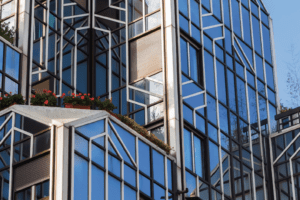AFIRE News

The pandemic has heavily impacted the hospitality sector, but a growing wave of non-traditional investors has shown heightened interest in getting a piece of the evolving industry.

The COVID-19 pandemic highlighted the advantages of single-family living. It appears to have accelerated an existing trend of migration to less dense, more affordable areas.

If history is a guide, the time to invest in hotels is when things look bleak. This appears to be one of those times.

Just as the pandemic has accelerated changes in culture, it has underscored the symbiosis between the built environment and the natural world. What’s the key to “greening” the next generation of commercial real estate?

The COVID-19 crisis highlights the advantages of single-family living and appears to have accelerated an existing trend of migration to less dense, more affordable areas.

AFIRE has been awarded two Stevie Awards as part of the American Business Awards (ABA) 19th annual awards program.

The investment community can have an active role in an equitable economic recovery—but it will require the necessary discomfort of recasting the traditional risk/return framework.

According to American Realty Advisors, the future of residential investments is all about demographics—and the forces behind them.

The 2021 survey, conducted in March 2021 and underwritten by Holland Partner Group, reflects investor sentiment and was designed to help understand the goals, challenges, and impacts of international investments on US real estate opportunities.

During a time of unprecedented uncertainty and disruption, how should businesses approach the “new metrics of performance,” and how will ESG evolve in 2021?

Though leverage is an important part of capital funding, it’s important to ask LPs if (and how) they should take control of their real estate leverage.

The events of the past year drove businesses to confront racial inequity, but some still shy away from the challenging language needed to make real restorative and economic progress.

Though leverage is an important part of capital funding, it’s important to ask LPs if (and how) they should take control of their real estate leverage.

The events of the past year have driven businesses to confront racial inequity, but some still shy away from the challenging language needed to make real, restorative, and economic progress.

How is commercial real estate set to perform in the post-COVID world? As COVID-19 vaccine distribution commences, it is time to turn attention to prospects for CRE performance in the post-COVID world.

In a post-COVID world, it is important to understand what a user wants, in other words, the people we interact with o a daily basis. How do we define a user and how does it impact real estate value?

The investment community can have an active role in an equitable economic recovery—but it will require the necessary discomfort of recasting the traditional risk/return framework.

As the cities cautiously re-open into the late phase of the pandemic, writer and urbanist Richard Florida believes that metros have a unique opportunity to reimagine and redefine what a “central business district” will look like in the new normal.

The Brookings Institution looks at structural market trends to facilitate a more transparent and inclusive conversation in real estate.

Non-US-based investors face the disclosure regime of the Corporate Transparency Act. What do you need to know?
